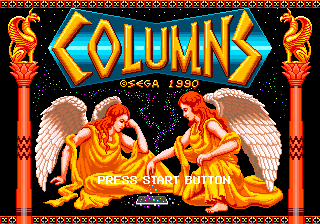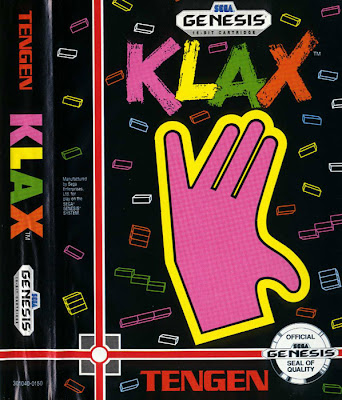The Short
Pros
- More zany, weird platforming from the guys at Shiny
- Did I say "platforming?" Add on isometric shooting, floating, and catching puppies
- Humor is back and better (and weirder) than ever
- The "snot grapple" adds some new platforming bits to the game
Cons
- Platforming controls as Jim can still be a little floaty
- Jim's idle animation looks...odd
- Some levels feel a bit unfair
- SNES version looks considerably worse than the Genesis version
 |
| Pig Slides. I think we're onto something here. |
The Long
As much as I love the first Earthworm Jim, I can't help but feel it was Shiny cutting their teeth on the whole "platforming" business. See, while Earthworm Jim was a good action-platformer that was essentially saved by its silly humor, Earthworm Jim 2 is where Shiny just went completely insane. While I guess I could still label it as a "platforming," Earthworm Jim 2 jumps genres and playstyles so frequently it's hard for me to really nail that down.
But let's just get into it all, shall we?
 |
| It has an isometric shooting stage. |
Earthworm Jim 2 starts out normal enough...as normal as an Earthworm Jim game is, anyway. A "regular" platforming level where you blast your way through enemies, carry pigs and push them down slides, use pigs as weights to solve puzzles, and use snot to climb across the ceilings. You know, usual platforming stuff.
Then you get to the first boss, who is a fish in a tank. Riveting.
 |
| Hold on to your butts! |
The next level begins to show the clever adjustments that Shiny has implemented in the game. Now you are in an ant farm, and you have to shoot dirt down from the ceiling to make ledges and passagesways to get out. It isn't a particularly difficult level, but after a "regular" level it's a bit weird.
Then you are bouncing purple puppies on a giant marshmallow to try and get them to a doghouse unharmed. Man, this game just got weird.
Things only get crazier from here. The next level Jim in inexplicably a blind cave salamander who can float/fly, and the stage is a mix between vertical platforming where you have to dodge the walls, a pinball machine, and a quiz show. Next to that is an isometric shooting stage where you have to push a bomb to the end of the level, and in the next you have to carry a cow through a difficult platforming stage. Next is a level where Jim blew his head up and is again another vertical segment, followed normal level where you fight through paperwork, and then Level "Ate," which is exactly what you think.
For the ninth and final level you are running from a boss set to the third movement of Beethoven's Moonlight Sonata, and then you get the suitably weird ending. Seriously...that's, what, three normal levels? Four? Earthworm Jim 2 just keeps mixing things up when you least expect it. While the first was pretty much a straight platformer, Earthworm Jim 2 is far from it.
The random mix-ups in gameplay keep the game interesting and fresh, especially for a first-time player. Unlike Earthworm Jim, where the platforming suffered because of the floaty controls, since you are constantly switching gears the somewhat imprecise controls on each game type are more forgivable. I will admit the isometric shooting stage was by far the most aggravating (having to push a stupid bomb forward while dodging enemies is extremely obnoxious), but there are enough tricks that eventually you'll get it. While the game is completely disjointed by its schizophrenic, ADHD approach to game design, it somehow manages to work. And because of that it's a vastly superior game than its predecessor.
 |
| I'm not kidding. Giant marshmallow. |
Things only get crazier from here. The next level Jim in inexplicably a blind cave salamander who can float/fly, and the stage is a mix between vertical platforming where you have to dodge the walls, a pinball machine, and a quiz show. Next to that is an isometric shooting stage where you have to push a bomb to the end of the level, and in the next you have to carry a cow through a difficult platforming stage. Next is a level where Jim blew his head up and is again another vertical segment, followed normal level where you fight through paperwork, and then Level "Ate," which is exactly what you think.
 |
| Pictured: Puns. |
For the ninth and final level you are running from a boss set to the third movement of Beethoven's Moonlight Sonata, and then you get the suitably weird ending. Seriously...that's, what, three normal levels? Four? Earthworm Jim 2 just keeps mixing things up when you least expect it. While the first was pretty much a straight platformer, Earthworm Jim 2 is far from it.
And I love the game because of it.
 |
| I wasn't kidding about the salamander thing, either. |
The random mix-ups in gameplay keep the game interesting and fresh, especially for a first-time player. Unlike Earthworm Jim, where the platforming suffered because of the floaty controls, since you are constantly switching gears the somewhat imprecise controls on each game type are more forgivable. I will admit the isometric shooting stage was by far the most aggravating (having to push a stupid bomb forward while dodging enemies is extremely obnoxious), but there are enough tricks that eventually you'll get it. While the game is completely disjointed by its schizophrenic, ADHD approach to game design, it somehow manages to work. And because of that it's a vastly superior game than its predecessor.
 |
| Just floatin' along. |
Graphically, Earthworm Jim 2 looks just as good at its predecessor, complete with the absolutely incredible animations. The varying stages allow for different art styles and a bizarre mix of real images with the cartoony graphics which, like the game design, somehow meshes together well despite itself. The backgrounds look especially good, with some fantastic vistas that are gorgeous to look at.
Sounds design is also stellar, with all the incredibly weird sound effects fitting in with the insane visuals and gameplay. Voice clips are crisp (or crisper than other games at the time, at least) and add to the oddball presentation.
 |
| And there are cows between each level. Why not. |
There really isn't any other game like Earthworm Jim 2, not even Earthworm Jim. Combining elements from tons of genres and then adding their own touch of weirdness to the mix, Shiny has created something wholly unique. While Earthworm Jim certainly did its own thing, it's Earthworm Jim 2 that I feel the series really found its identity. It's too bad it never really went anywhere after that (Earthworm Jim 3D is...yeah).
This game is available on the Virtual Console and is absolutely worth picking up. Here's hoping that we'll see a true 2D followup to Earthworm Jim sometime in the near future. If there's any series I'd like to see revived, it would be this one.






























